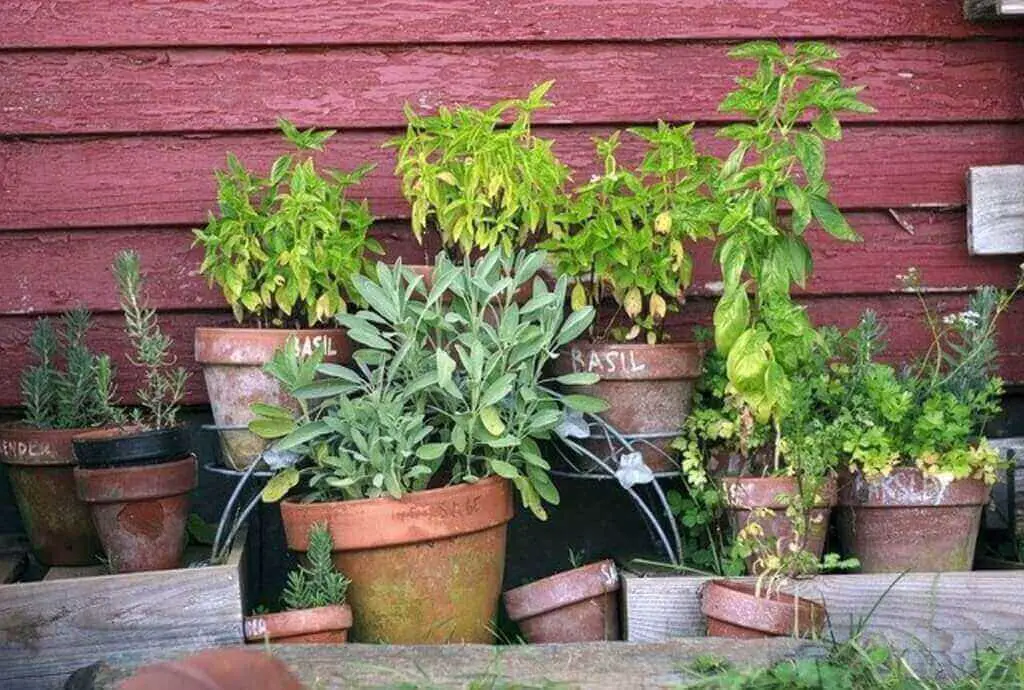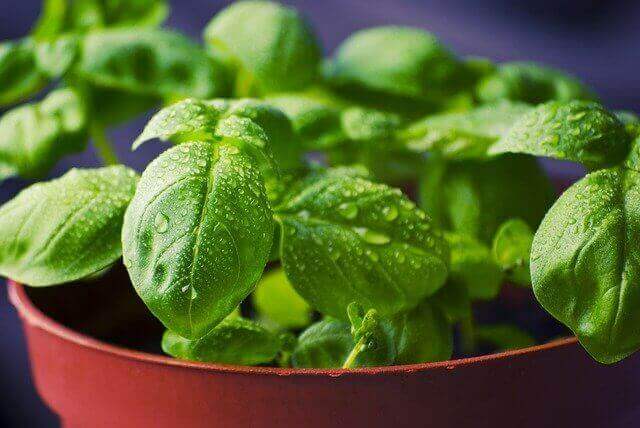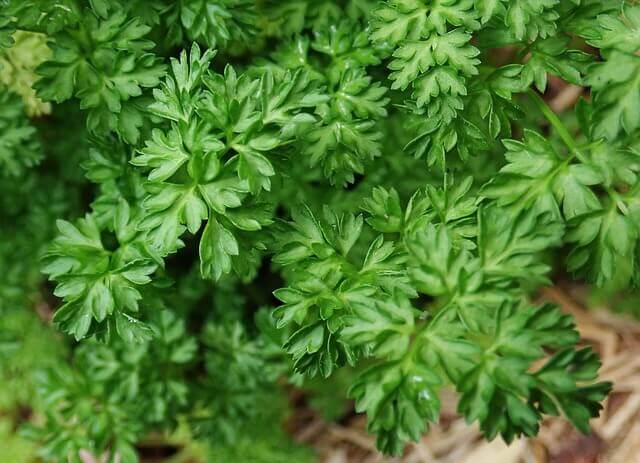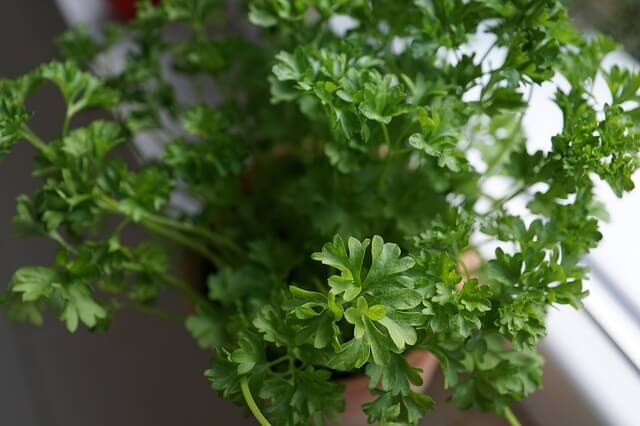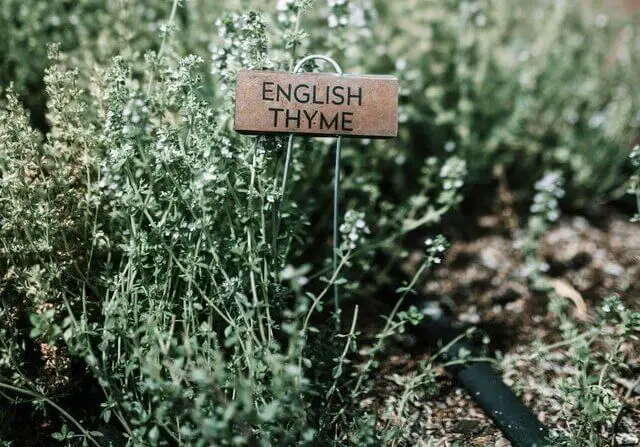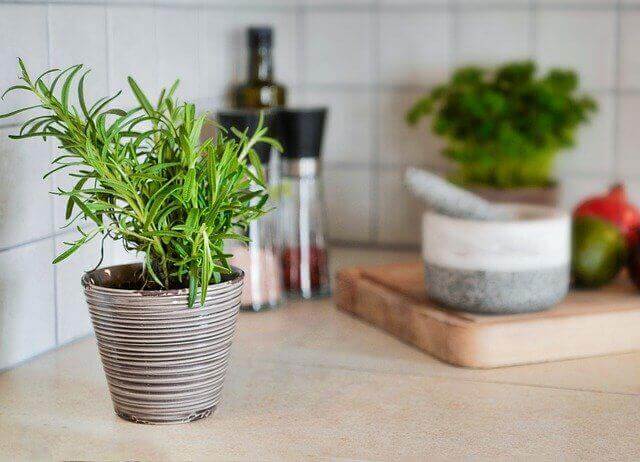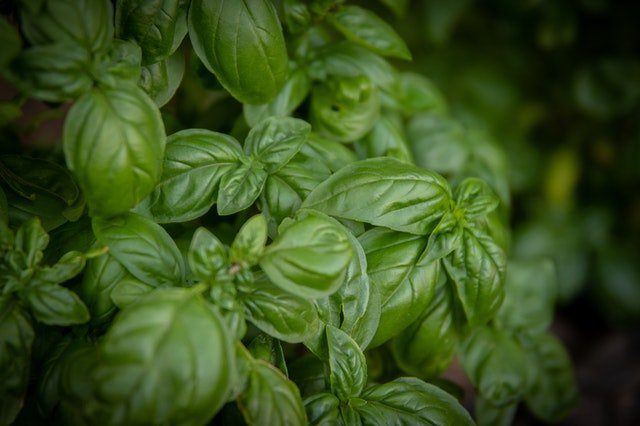Herbs That Grow Well Together in the Same Pot! Expert Tips
Herbs that grow well together in the same pot can save space, simplify care, and even boost each other’s growth. But not all herbs make good neighbors. Some need more sunlight, while others demand cooler, wetter soil. In this guide, you’ll discover which herb pairings thrive side by side, and why. Whether you’re working with a small patio container or a sunny kitchen windowsill, these proven combos will help you grow a healthy, flavorful herb garden with ease.
Table of Contents
- 1 Herbs That Grow Well Together In The Same Pot
- 1.1 Basil and Oregano: A Perfect Pair for Container Gardening
- 1.2 Chervil and Coriander: A Delicate Duo for Shady Containers
- 1.3 Chives and Marjoram: A Flavorful Pair with a Bit of Patience
- 1.4 Parsley and Rosemary: A Flavorful and Practical Combination
- 1.5 Thyme and Sage: A Flavorful and Space-Efficient Duo
- 1.6 Rosemary and Sage: A Spacious Herb Pair for Your Home
- 1.7 Basil and Parsley: A Dynamic Duo in Containers
- 2 Author
Herbs That Grow Well Together In The Same Pot
Basil and Oregano: A Perfect Pair for Container Gardening
Basil (Ocimum basilicum) and oregano (Origanum vulgare) make excellent companions in the same container thanks to their similar growing needs. Both thrive in full sun, enjoy well-draining soil, and benefit from consistent but not excessive watering. Their compatibility means they won’t compete aggressively for resources, making them ideal for beginner and experienced gardeners alike.
To get started, choose a container with good drainage and fill it with a high-quality potting mix. Aim for a soil pH between 6.0 and 7.0, slightly acidic to neutral, perfect for both herbs. Place the container in a sunny location, such as a south-facing windowsill, balcony, or patio, where it will receive at least 6–8 hours of direct sunlight per day.
Water thoroughly when the top inch of soil feels dry, but avoid waterlogging. Unlike basil, which prefers slightly more moisture, oregano is more drought-tolerant, so group watering should be balanced to accommodate both. Mulching with straw or coco coir can help retain moisture evenly.
✅ Pro Tip: Pinch back basil regularly to encourage bushier growth and prevent early flowering. Meanwhile, harvesting oregano often enhances its flavor by concentrating essential oils in the leaves.
With proper care, basil and oregano will not only flourish together but provide a steady harvest of fresh, aromatic leaves all season long.
Chervil and Coriander: A Delicate Duo for Shady Containers
Chervil (Anthriscus cerefolium) and coriander (Coriandrum sativum), also known as cilantro, make a flavorful and functional pairing in container gardening, especially if you’re short on space and love cooking with fresh herbs. Both thrive in cooler conditions and partial shade, making them ideal companions in the same pot.
Start with a medium-sized container that has excellent drainage and is at least 8 inches deep. Use a rich, loamy potting mix that retains moisture but doesn’t stay soggy. Chervil prefers consistently moist soil, while coriander can tolerate slightly drier periods, so aim for even moisture without overwatering. A layer of mulch can help retain moisture and keep roots cool.
Place the container in a spot that gets morning sun and afternoon shade, or use a grow light if gardening indoors. Both herbs bolt quickly in heat, so keep them away from hot windows or mid-day sun. For indoor growing, a cool, north-facing windowsill can work well.
✅ Pro Tip: Harvest coriander leaves early and frequently to delay flowering. Chervil, which has a mild anise-like flavor, benefits from regular trimming to promote bushier growth.
By planting chervil and coriander together, you’ll have two gourmet herbs at your fingertips, perfect for salads, soups, and finishing sauces, all from the same compact container.
Chives and Marjoram: A Flavorful Pair with a Bit of Patience
Chives (Allium schoenoprasum) and marjoram (Origanum majorana) may share space in the kitchen, but growing them together in a single container requires some care and planning. While both herbs are culinary favorites, they have slightly different needs and growth habits, making this pairing best suited for attentive gardeners.
Use a well-draining, compost-rich potting mix in a container that’s at least 10 inches wide. Chives prefer slightly damp soil and can tolerate partial shade, while marjoram thrives in full sun and likes drier conditions between watering. This means balancing their watering schedule is key, keep the soil just moist enough to satisfy chives, but not too wet for marjoram.
Position your container in a sunny window or on a patio where both herbs can get 4–6 hours of light daily. If you notice one plant shading the other or outgrowing its space, gently rotate or reposition them every few days to ensure even light exposure.
✅ Pro Tip: Trim chives frequently to prevent overcrowding, and pinch marjoram tips to encourage bushy growth and delay flowering.
Though chives and marjoram take a little finesse to grow together, the reward is a dynamic duo of herbs that brings both visual appeal and delicious flavor to your dishes.
Parsley and Rosemary: A Flavorful and Practical Combination
Growing parsley (Petroselinum crispum) and rosemary (Rosmarinus officinalis) together in the same container offers the perfect blend of culinary versatility and fragrance. These two herbs are frequently used together in Mediterranean cuisine, complementing each other in a variety of dishes, from hearty soups to fresh salads and savory roasts.
Both parsley and rosemary can thrive indoors year-round, provided your home maintains adequate temperatures and sunlight. If your home doesn’t offer enough natural light, consider placing them near a south-facing window or using grow lights. Alternatively, growing these herbs outdoors in a sunny spot will also yield great results during warmer months.
When growing parsley and rosemary together, it’s essential to keep their roots separate to avoid competition for space and nutrients. Using a container with a dividing wall or a mesh separator can help. If using a standard container, tie their roots gently with string to prevent them from intertwining and growing through the walls of the pot. This technique will help both herbs grow at a steady rate and avoid overcrowding.
✅ Gardener’s Tip: Regularly trim rosemary to encourage bushier growth, and harvest parsley frequently to keep it producing fresh, tender leaves.
With a little care and the right container setup, you’ll have a thriving herb garden that provides you with flavorful herbs all year long.
Thyme and Sage: A Flavorful and Space-Efficient Duo
Planting thyme (Thymus vulgaris) and sage (Salvia officinalis) in the same container can significantly increase your herb harvest, giving you a generous supply of both herbs in a compact space. These hardy, flavorful herbs are perfect for growing together, as they share similar growing conditions and thrive in a larger container.
Both thyme and sage are resilient plants that require minimal care. To start, choose a container with excellent drainage to prevent overwatering, as both herbs prefer well-drained soil. While thyme is quite drought-tolerant, sage is more sensitive to dry conditions, so ensure the soil remains evenly moist, but never soggy.
Place your container in an area with ample sunlight, ideally a sunny windowsill or balcony. Both thyme and sage thrive with at least six hours of direct sunlight daily, which will help them produce strong, flavorful leaves.
✅ Pro Tip: To prevent overcrowding, prune thyme regularly to encourage bushier growth, while sage can be trimmed back to maintain its shape and prevent it from becoming leggy.
With a little attention to drainage and sunlight, you’ll enjoy a healthy, productive herb garden filled with these aromatic, versatile herbs.
Rosemary and Sage: A Spacious Herb Pair for Your Home
Growing sage (Salvia officinalis) and rosemary (Rosmarinus officinalis) together in pots or hanging baskets is an ideal choice if you’re limited on space or want to easily move your herbs around your home. These two herbs thrive in well-drained containers and can be placed in various spots such as kitchens, pantries, or sunny windowsills.
While some herbs are content growing close together, sage and rosemary benefit from a bit more space to spread out. Since they are both hardy, woody herbs, they appreciate containers that offer good airflow and room for their roots to expand. Starting them in individual pots and later transferring them to larger containers, or using hanging baskets, can help create a healthy, thriving environment.
For optimal growth, it’s a good idea to plant sage and rosemary at different times of the year, giving them the best chance to grow side by side without competing for nutrients. Water them regularly, but be mindful not to overwater, as both herbs prefer dry to moderately moist conditions. Allow the soil to dry out slightly between waterings to avoid root rot.
✅ Gardener’s Tip: Regularly trim rosemary to maintain its shape and encourage bushier growth, and harvest sage leaves to keep it producing fresh foliage.
By giving sage and rosemary the right space and care, you’ll have vibrant, aromatic herbs ready to enhance your dishes year-round.
Basil and Parsley: A Dynamic Duo in Containers
Growing basil (Ocimum basilicum) and parsley (Petroselinum crispum) together in a container is an excellent way to ensure both herbs receive the light and air circulation they need to thrive. Containers create an ideal microenvironment that allows you to manage light exposure, moisture levels, and space, which can significantly improve growth and harvest yields.
For optimal growth, ensure that the container provides ample sunlight, as both basil and parsley flourish in bright conditions. Additionally, proper air circulation is key to preventing mold or rot, particularly in humid environments. To encourage strong, healthy plants, keep the soil moist but not waterlogged.
Herbs like basil and parsley tend to prefer slightly different soil conditions, but both benefit from a balanced, well-draining mix. Aim for a neutral pH level (around 6.0-7.0) in your soil, which will support healthy root development and prevent nutrient deficiencies. A combination of high-quality potting mix and a bit of compost can work wonders for both plants.
✅ Gardener’s Tip: Consider using a self-watering container or a drip irrigation system to maintain consistent moisture levels, especially if you’re growing them indoors or in a hot climate.
By providing these herbs with the right conditions, you’ll be rewarded with a bountiful, flavorful harvest all season long.

